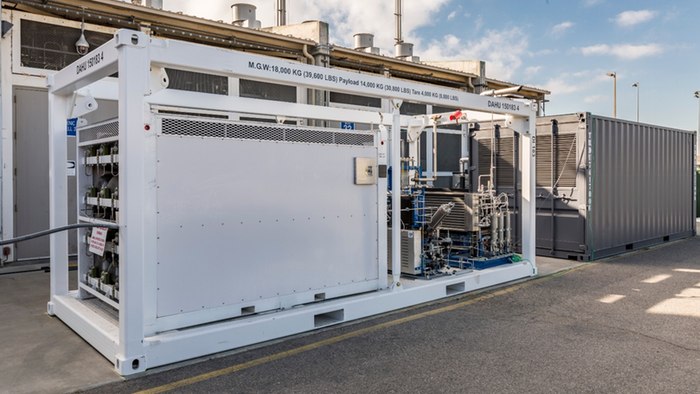Boeing has delivered a new type of fuel cell to the US Navy for testing that can both store energy and generate electricity. Called a "reversible solid oxide fuel cell," it's designed to absorb energy from renewable sources, such as wind and solar, then release it as required to provide commercial and military users with a cleaner, more sustainable source of power.
One of the major failings of renewable energy sources is that most of them are notoriously unreliable. The sun only shines part of the time and the wind is as unpredictable as… well, the weather. This is a particular problem for the US military, which operates under a policy of becoming a greener fighting force, but still needs power sources that are constant and predictable.
Sixteen months in development, the Boeing fuel cell system relies on a catalytic electrolysis process that uses electricity to break up water or other materials to generate hydrogen gas, which it then compresses and stores for later use. When electricity is needed, the fuel cell can reverse itself and burn the hydrogen to produce electricity with only water for waste. Boeing claims that this is the first time that both sides of the cycle have been combined into a single system.
The Boeing system was first tested on the Southern California Edison power grid at Boeing's Huntington Beach, California, facility. It will now be connected to the Navy microgrid at the Naval Facilities Engineering Command, Engineering, and Expeditionary Warfare Center in Port Hueneme, California to see it can support military requirements.
"This fuel cell solution is an exciting new technology providing our customers with a flexible, affordable, and environmentally progressive option for energy storage and power generation," says Lance Towers, director, Advanced Technology Programs. "Boeing is known for successful innovation and technology advancement. As the company begins its second century, it's not surprising that we'd be at the forefront of helping solve the energy and technology challenges of the 21st century."
Source: Boeing
